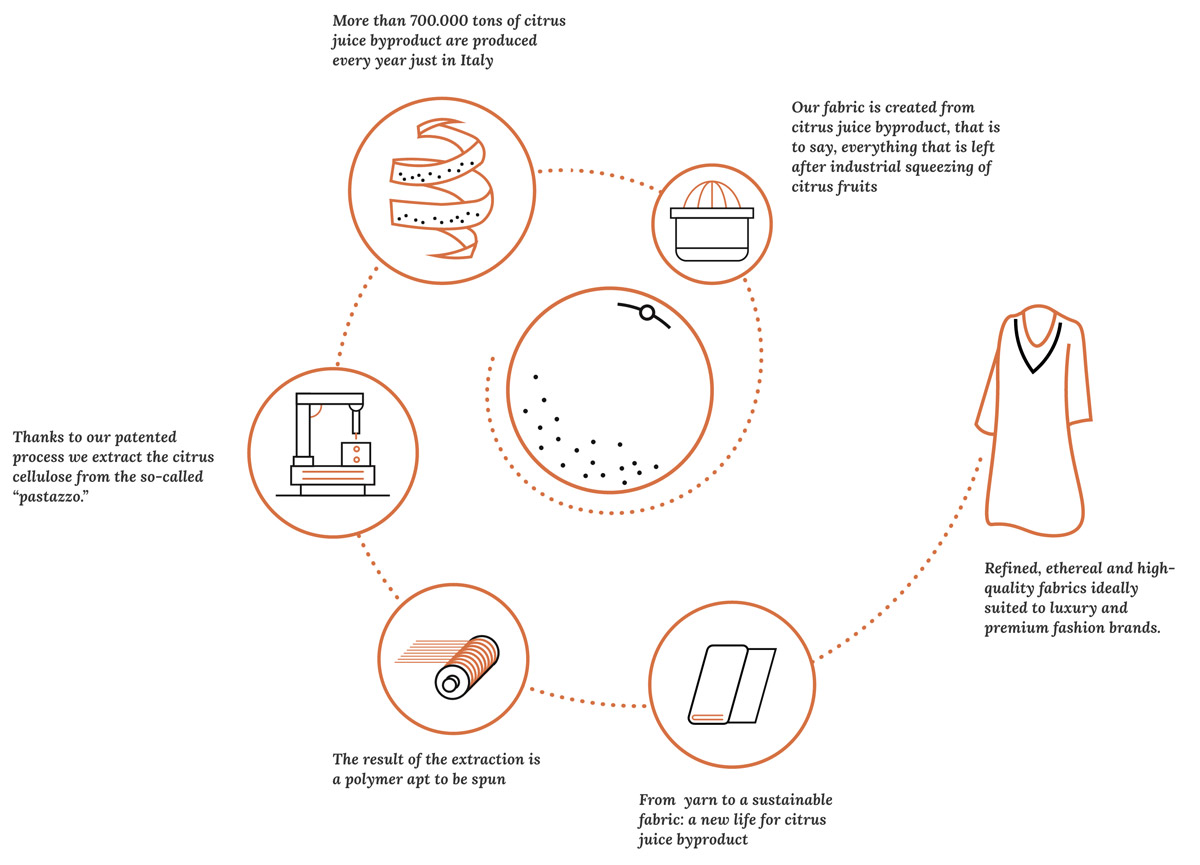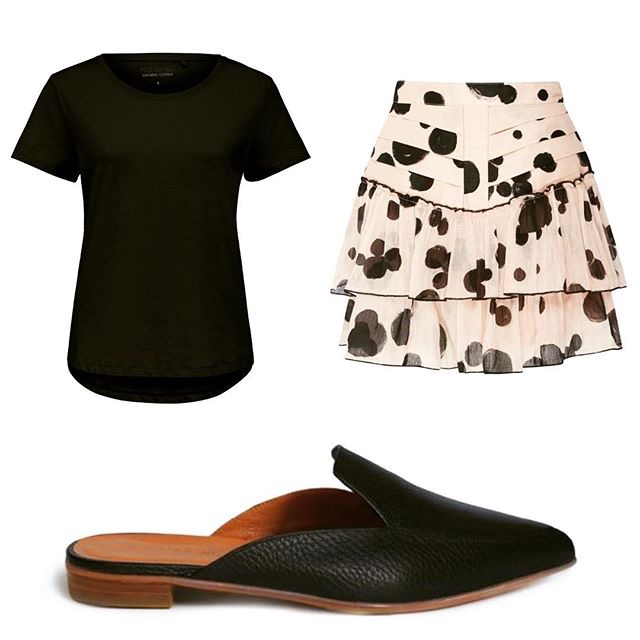Building a sustainable wardrobe is one way that you can help make a difference. Added bonus – it can simplify your life AND save money. More on how to do that in a moment, but first let’s take a look at what we’re currently dealing with…
150 billion pieces of clothing end up in landfill each year. A quick search on Google will lead you to believe that the fashion industry is the second highest polluter. While the Pulse of the Fashion Industry report begs to differ it still places it in the top 10 and reveal that only 52% of fashion executives have sustainability and environmental targets.
However, the fashion world IS making a shift towards sustainability. The Ethical Fashion Guide allows you to check whether a brand does enough to protect their workers. There are articles about new materials (there is a fabric made from orange peel!) and businesses like Glam Corner. Sustainable fashion has been embraced by an increasing number of people who seek a guilt-free conscience, good feelings, and the knowledge that they are supporting communities...

The dark side of sustainable fashion
In 2014 Vogue was called out by a writer for appropriating the sustainable fashion conversation and presenting sustainable options as simply one of many, rather than educating their audience on the benefits. More recent research on luxury brands’ sustainability efforts questions whether the consumers are ready to pay more because they support sustainability efforts or whether it is just another ‘means of flamboyancy’.
Fortunately, it’s not all doom and gloom
At the same time, many publications and bloggers are coming out with great ways to make the way we go about dressing more sustainable, while also still being fun and empowering.
Francesca Willow, the creator of the blog Ethical Unicorn features articles on all things ethical and sustainable covering things from social justice to body positivity. She has featured pieces on a sustainable fashion brand endorsed by the UN and sustainable underwear that supports self care.
So, how can we create a sustainable wardrobe that still turns heads?
Building a sustainable wardrobe could be approached in many ways, and this is a subject I will no doubt keep coming back to. A great way to do this is to focus on your personal style, rather than fashion. Fashion comes and goes, style lasts forever.
Not sure what your personal style is? Click here to potentially win your own personal stylist for a day!
Aim to focus on building a wardrobe you can wear and wear again, which is always in style and specific to you and your lifestyle. This is the mindset for sustainability.
Functionality and minimalism are essential to a sustainable wardrobe. There are countless guides on how to achieve that, some even telling you a magic number of hangers you should aim for. However, I believe that everyone has their own number that would allow for a sense of wellbeing and harmony.
Try these ideas on for size…
The main thing is that every single item you own should bring you joy and get as much wear as possible. If you have items that have been sitting in a box on your top shelf or in the depths of your drawer, it’s time to do a revision.
The goal is to minimise the cost per wear of each and every single garment you own. Wearing something once or twice certainly doesn’t achieve this.
A sustainable wardrobe is a functional wardrobe
Do you frequently think ‘I have nothing to wear’? Or maybe you buy lots of items on sale without any idea of what to do with them later? Or perhaps you have garments that get no wear because they don’t match anything else you own?
If those things are true for your life, your wardrobe is probably not very functional. (It’s probably pretty expensive, too!)
A functional wardrobe:
- Contains pieces that allow you to effortlessly build multiple looks.
- Matches your lifestyle – a CEO and student would have completely different wardrobes.
- Contains pieces that suit your body type.
- Follows one main style.
10 steps to achieving a practical and sustainable wardrobe
1 – Assess Your Lifestyle
What roles do you perform (e.g. Mum, business professional, socialiser, fitness buff, couch potato etc)? How influential are these different roles when investing in your wardrobe?
Come up with the ideal number of outfits for each role. This is very individualised – some people are happy to wear the same outfit or two on rotation and others prefer multiple looks.
2 – Know Your Body
What is your body shape? Look at the proportions of your shoulders, hips and waist to determine your shape and learn the style rules for your shape. For example, if you have a narrow waist you don’t want a wardrobe full of unstructured tops and dresses.
3 – Define Your Style
What is your natural style? Are you classic, or are you more feminine for example? If you are unsure, who in the influencer/celebrity world has a style that resonates with you? Look to them to hone your own style. A classic style is timeless, very practical and sustainable.
4 – Declutter
Once you get clear on your lifestyle, body shape and signature style, do a review of your wardrobe. Eliminate any pieces that don’t work for you, or that you simply don’t like or wear and also those pieces that are tired (fabric is balling/pilling/fading, stains that you can’t get out – you get my drift), If you haven’t worn it in a year, it might be time to give it away.
You could donate it to an op shop or take it to one of the brands’ recycling initiatives BUT before you do, play around with it and pair it with other pieces you would never have thought to put it with. You might surprise yourself and find a new way to wear it.
5 – Build Your Go-To Looks
‘Go-to-looks’ are outfit combinations that work for your shape, style & life, which you have on rotation to make life easier for yourself. Make a list of all the situations that require different types of outfits. Now make yourself a cocktail and set aside an hour or two to play around in your wardrobe. Build looks for each life role, lay them out on your bed complete with shoes/accessories and take photos of each outfit.
Switch accessories or swap a single piece and you can create a completely different look. The key is to keep a photographic record of all the different combos and file them so that they are accessible as a quick reference when dressing.
This skirt is a star of a dressed-up and an off-duty look.


6 – Identify Your Purchase Approach
Figure out what key pieces you are missing and come up with a plan for filling in those gaps. This approach will more likely lead you to great purchases rather than relying on impulse shopping.
Perhaps you prefer to shop seasonally and build a capsule wardrobe for each season? Perhaps you like to vintage shop? Maybe your approach is to invest in a few luxury pieces and really make them work for you.
7 – Be an Informed Shopper
Do your research to find out which brands use sustainable fabrics and have sustainable and ethical sourcing strategies and supply chains. Be mindful of this when choosing where to shop and what to wear. Some examples of sustainable brands that come to mind are The Fashion Advocate and KitX. You might be surprised to learn that even Zara, Witchery & Country Road rank well in the latest Ethical Fashion Guide.
8 – Consciously Invest –
When pulling together different outfits you may identify missing pieces – “if only I had a top to go with these pants & this skirt”. Put these missing items on your shopping list.
Also think about ‘hero pieces’ ie pieces that you can wear time and time again in different outfits & across all parts of your life (casual, business, going out etc.) – a good pair of jeans, a navy or black blazer, a white shirt etc.When shopping, consciously invest in pieces that will round out your wardrobe and that you can wear time and time again.
9 – Consider Rental
For special events or occasions that call for a specific look which is not practical for your everyday life, consider renting rather than buying. There are loads of amazing rental options now, especially for dresses and designer handbags. One I used recently for designer bags is Style Secret.
10 – Get Creative With Your Unwanted Pieces
Rather than leaving unworn items in your closet or dumping them on the back doorstep of your local op shop, think about other meaningful uses.
Look at how you could repurpose by having a tailor make modifications to make them more functional; hold a clothes swap with your girlfriends; set up a stall at your local market or on eBay; make your old pieces into clothing/toys for your kids (or have someone do this for you); rent out your occasion wear and make some added $$s as a bonus.
Check out Sarah Tyau’s magic in upcycling clothes

Style can be fun and so can creating a functional and sustainable wardrobe. Like anything worthwhile in life, it requires a little bit of time and a systematic approach to set yourself up, but making this investment can be tremendously rewarding for you, the planet and its people
Footnotes:
- Fast Fashion: The second largest polluter in the world. Greenmatch, 06 Dec 2018, https://www.greenmatch.co.uk/blog/2016/08/fast-fashion-the-second-largest-polluter-in-the-world
- Lundblad, L., and Davies, I. A. (2016) The values and motivations behind sustainable fashion consumption. J. Consumer Behav., 15: 149–162. doi: 10.1002/cb.1559.
- Jones, Kathryn Jo Baker. 2014. “Looking at Fashion through Green-Colored Glasses: A Multimodal Critical Discourse Analysis of Vogue’s Sustainable Fashion Editorials.” Order No. 10157665, University of Missouri – Columbia. https://search-proquest-com.ezproxy.lib.rmit.edu.au/docview/1823660889?accountid=13552.
- Ramchandani M., Coste-Maniere I. (2018) Eco-conspicuous Versus Eco-conscious Consumption: Co-creating a New Definition of Luxury and Fashion. In: Muthu S. (eds) Models for Sustainable Framework in Luxury Fashion. Textile Science and Clothing Technology. Springer, Singapore

